|
|
|
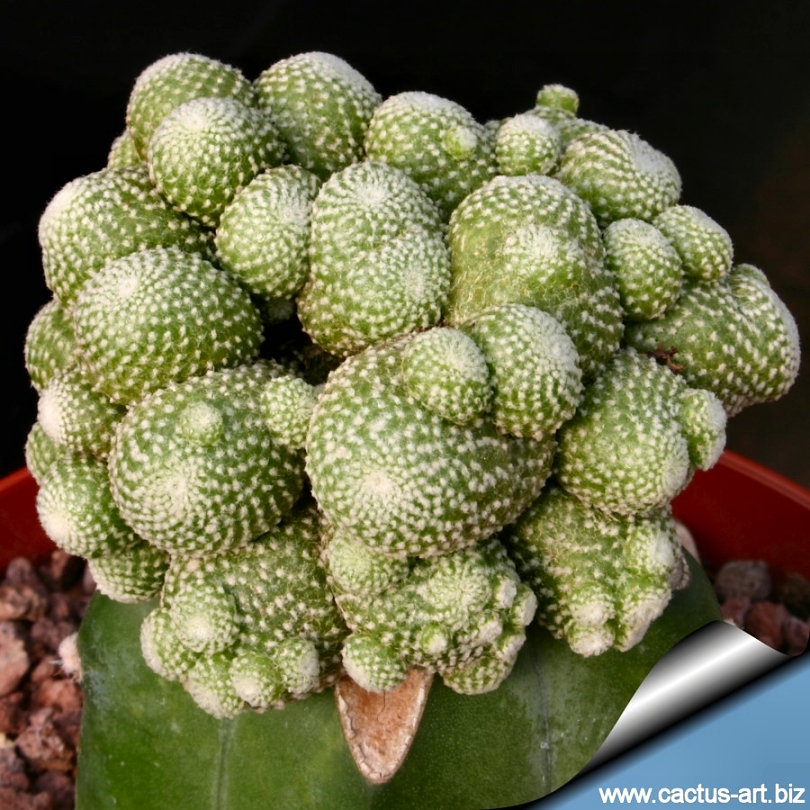
Blossfeldia liliputana
This is the smallest known cactus, it forms forms little
clusters of multiple
disc-shaped heads that in nature rarely exceed 12 mm in diameter!
|
|
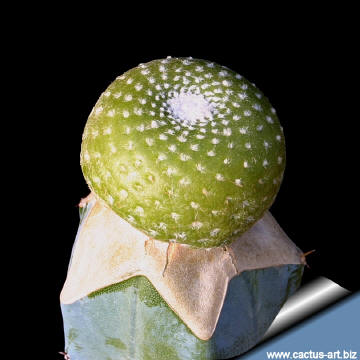
|
Description:
Solitary or clumping miniature cactus, with no rib and no spines.
Stem: Flattened disc-shaped, gray-green, usually up to 1.2 cm in
diameter (rarely exceed the 2, but in cultivation grafted plants may
attain a bigger size.
Ribs: Bodies have no ribs or tubercles.
Areoles: Spiralling bearing tufts of wool and no spines.
Root: Tuberous.
Flower: Diurnal, white or pinkish (yellow) diurnal, 6-15 mm long
and 5-7 mm diameter and self fertile.
Flowering season: Summer.
Seed: The seeds are minuscule ( like dust )
Although several species of Blossfeldia have been described (as
many as six), most botanist agree on the fact that all the ones
described until now should all be included in Blossfeldia liliputana.
|
|
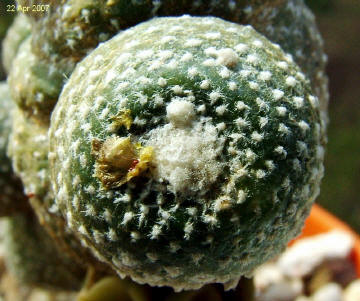
Photo &
© copyright
by Süleyman Demir Turkey
Blossfeldia liliputana |
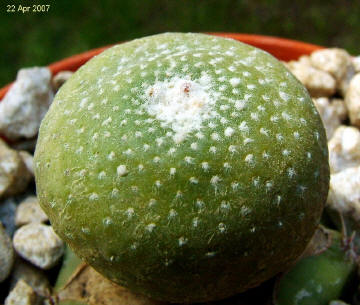
Photo &
© copyright
by Süleyman Demir Turkey
Blossfeldia sp. Villazzon |
|
Cultivation: Some shade is preferred and a very well draining
potting mix. Frost Tolerance: At least -10°C.
Their specialized environment (mountain rock cracks), and the extremely
dry environment makes them very sensitive to root loss. Because of their
slow growth rate, Blossfeldias are often grafted, which causes them to
grow very fast and offset heavily but lose their characteristic
disc-like shape, becoming quite globular and bloated. In this case the
minimum temperatures acceptable should take in account the requirements
for the rootstock. Any way this miniature is grown, it is a true wonder
of the vegetal kingdom.
Propagation: Seeds, grafts.
The miniscule seeds should be sown on the surface of a very finely
sifted soil mix. These plants are very slow growing and is very
difficult to keep them alive on its own roots for the first 4-6 months
and should be watered by carefully misting with a hand held spray bottle
until they are large enough to be watered normally (2 to 5 years!). But
the bagging is the preferred sowing method for this plant, of course,
maximum sterilization is important in that method as the bag remains
sealed for up to two years. We have even heard of people successfully
growing this plant on a porous rock
Many growers graft tiny 2-3 month seedlings and they grow on very
successfully that way.

 |
|
Advertising
|
|
|
|
|
Family:
Cactaceae (Cactus
Family) |
|
Scientific name:
Blossfeldia liliputiana Werdermann
The spelling is often cited as
liliputana, but under the
provisions of the International Code of Botanical Nomenclature this is
an orthographic error to be corrected to
liliputiana.
Origin: It is established over a wide geographical area
ranging from Southern Bolivia (Potosí Department) to north-western
Argentina (Jujuy, Salta, and Catamarca Provinces), at elevations of 1200
to 3600 m
Habitat: Plants are found growing on
rocky slopes and often between cracks in the sides of vertical stone
cliffs mainly on shale like rock formations often close to waterfalls
where they have a almost continous water flow running over them, but can
withstand severe drying out and (in habitat) they can to survive nearly
complete desiccation, recovering when fog, mist or rain returns to their
natural environment..
Conservation status: Listed in
CITES appendix 2.
Etymology: The species is named after the
fictional country Lilliput where all the inhabitants are minute.
|
|
Synonyms:
Heterotypic synonyms:
- Blossfeldia pedicellata
- Blossfeldia tominensis
- Blossfeldia vallegrandensis
- Blossfeldia minima
- Blossfeldia fechseri
- Blossfeldia campaniflora
- Blossfeldia mizqueana
- Blossfeldia atroviridis
|
|
|
|
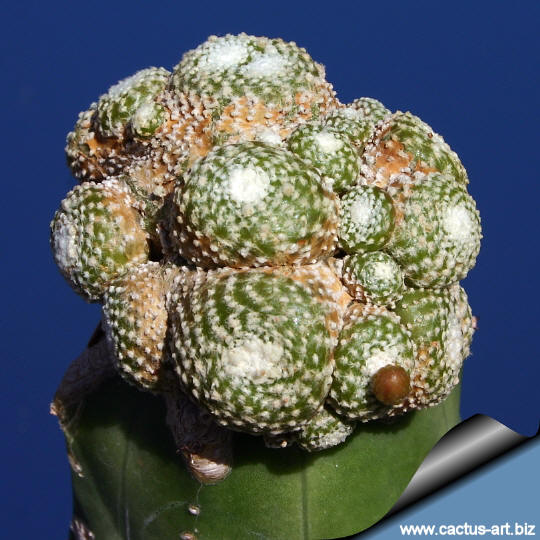
Bloosfeldia a
poikilohydric and almost
astomate succulent:
This remarkable miniature is the most enigmatic of all cacti,
confounding us with its physiological, anatomical, morphological,
ecological and evolutionary peculiarities. They are apparently the only
cacti that are capable of completely drying out and then rehydrating
their cells when watered (called "poikilohydric").
It has been found to lose up to 80% of its moisture in one year and then
survive drought for an additional year, making it very similar to mosses
and lichens in being adapted to withstand near complete loss of
moisture! It could be that what looks like a few dried out and dead
seedlings could be revived by a thorough soak.
Except for certain parasites and aquatics, this species possesses the
lowest density of
stomata of any terrestrial flowering plant.
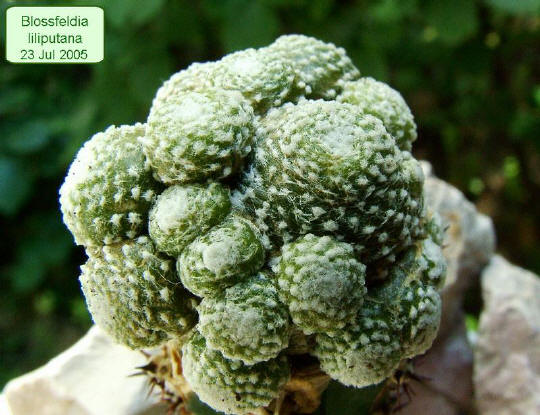
Photo &
© copyright
by Süleyman Demir Turkey
Any way this miniature is grown,
it is a true wonder of the vegetal kingdom with tiny spherical stems
dotted with white areoles.
|
|